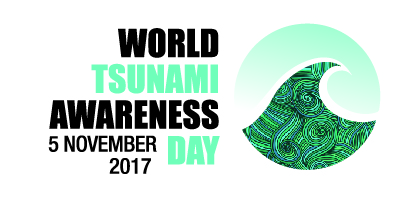
The National Emergency Management Organisation (NEMO) joins the rest of the world in commemorating “World Tsunami Awareness Day” (WTAD), November 5, 2017. November 5 was designated by the United Nations General Assembly to raise public awareness of the deadly threat posed by tsunamis and to share innovative approaches to reducing risk. For the second year in a row, the World Tsunami Awareness Day will align with the International Day for Disaster Reduction and the "Sendai Seven Campaign" and will focus in 2017 on Target B of the Sendai Framework for Disaster Risk Reduction which aims at reducing the number of affected people globally by disasters. is commemorated all around the world, as “World Tsunami Awareness Day” (WTAD).
Although tsunamis may be rare, they can be extremely deadly causing heavy human and economic losses in coastal communities. Such an impact isn't inevitable, however, early warning systems can save lives. Tsunamis are often accompanied by natural signs that can be sensed by an attentive individual, especially in areas close to the beach or coast. These Warning signs are Feel, See and Hear.
A strong local earthquakes may cause a tsunamis. If you FEEL the ground shaking severely and you SEE the ocean pulling back from the coastline significantly, exposing the ocean floor, reefs and fish and you HEAR a roar like an oncoming train or plane, RUN to higher ground.
In the past 500 years there have been ten confirmed earthquake-generated tsunamis in the Caribbean Basin with four causing fatalities. An estimated 350 people in the Caribbean were killed by these events. (Source: uwiseismic.com).
Tsunamis caused by large volcanic eruptions at or below sea level also pose a threat to the Eastern Caribbean. The submarine volcano Kick-‘em-Jenny (submarine volcano) located 9 km north of Grenada erupts on average every 11 years.
At least two of those eruptions, in 1939 and 1965, generated small tsunamis that were witnessed on the north coast of Grenada.
Detailed studies of the physical structure of Kick-‘em-Jenny conducted in 2002-2004, however, have shown that the volcano does not currently pose an immediate tsunami threat, but it is possible that future eruptions could change this situation. (Source: uwiseismic.com).
The historical record suggests that potentially destructive tsunamis occur at an average rate of 1-2 per century in the Caribbean (Source: uwiseismic.com).
To commemorate the first year of World Tsunami Awareness Day 2016; NEMO held a series of tsunami smart sessions
